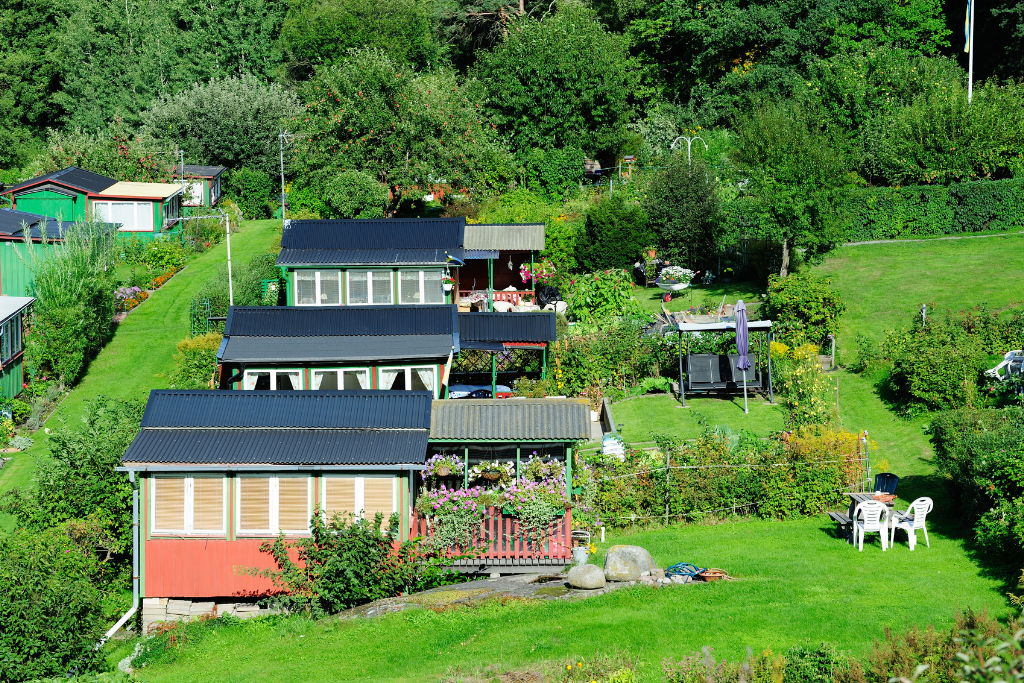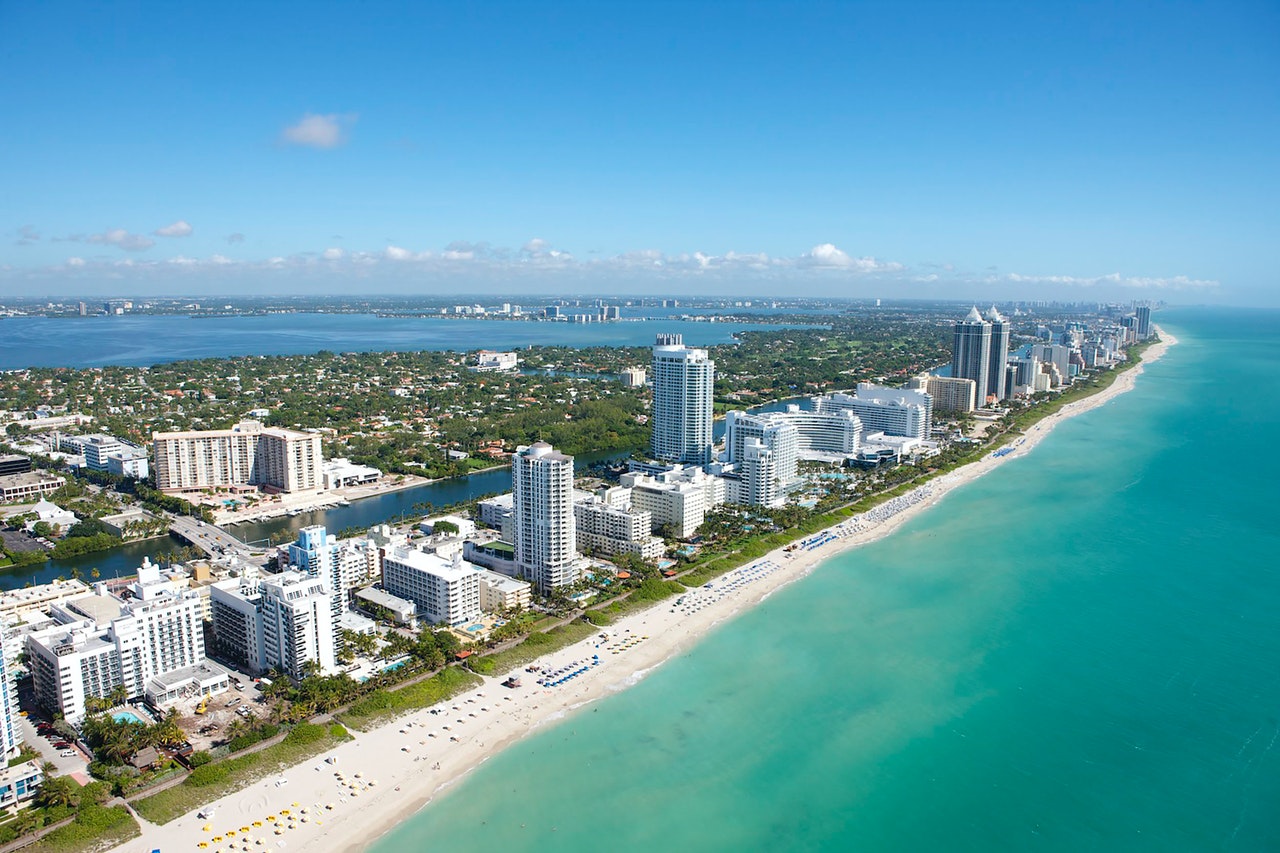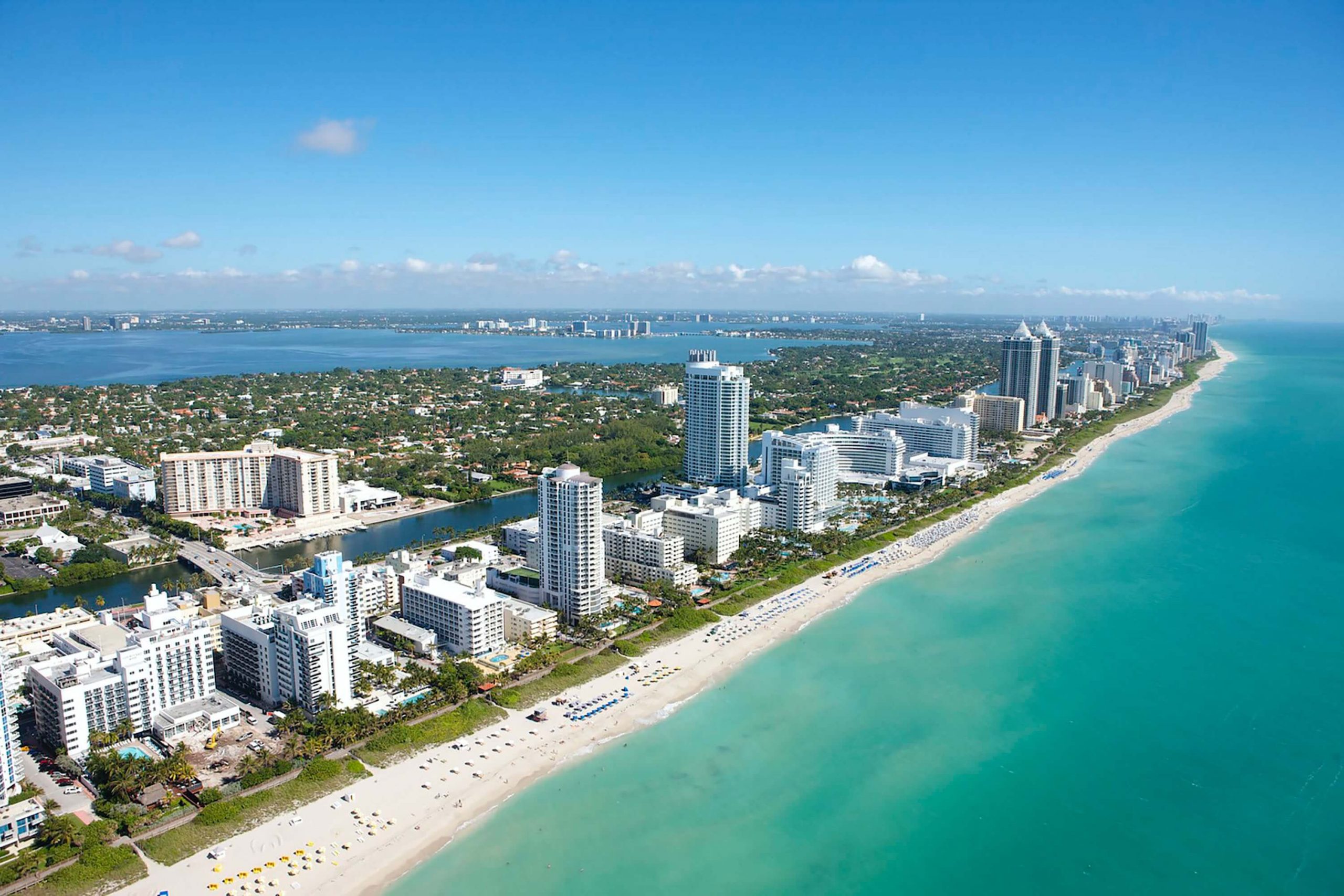7 types of tiny house designs in Canada
1. Tiny House on Wheels

A tiny home on wheels is a small house built on a trailer. Many Canadians choose to put their tiny homes on trailers due to municipal regulations. These homes measure between 60 and 400 square feet. Tiny homes are not yet recognized as legal dwellings in most areas of Canada, but
RV-type vehicles are. This is why some choose to build their tiny homes on trailers and design them to resemble residential houses. Some even hide the wheels when the home is parked and add a foldable deck.
The cost of a tiny house on wheels depends on several factors such as material costs, labour, and size.
Basic Tiny Home on Wheels
Mid-Range Tiny Home on Wheels
High-End Tiny Home on Wheels
$8,000 – $44,000
$45,000 – $79,000
$80,000 – $150,000+
2. Shipping Container Home

Shipping container homes are built using repurposed cargo containers. This recent initiative helps recycle the thousands of shipping containers discarded each year. There are 3 standard sizes of shipping containers: 10 feet, 20 feet, and 40 feet. The 20-foot containers are most commonly used for container tiny homes.
Cost of a Shipping Container Home
There are two steps to determine the cost of your container home.
Step 1: Purchase of a used container:
A used 20-foot shipping container in good condition typically costs between $3,000 and $4,500.
You can find used containers on sites like Kijiji – Used Shipping Containers for Sale and Northern Container Sales.
Step 2: Purchase and installation of interior structure and foundation materials:
- Heating, air conditioning, plumbing, and electricity: $21,000
- Roofing and insulation: $8,500
- Doors and windows: $6,000
- Flooring: $5,000
- Painting and wall finishes: $6,000
- Shelving and closets: $2,000
The average price for a 20-foot container home is $52,250.
3. Micro Home

Micro homes are larger than typical tiny homes but smaller than, say, a suburban family bungalow. They measure between 700 and 1,100 square feet and often resemble simple single-family bungalows.
They also resemble mobile homes but unlike mobile homes, micro homes have a long lifespan when well maintained. Micro homes don’t have basements and are built on foundations. They often have a modern look and several windows around to make the space feel larger.
The price of a Level 1 Micro-Loft™ series tiny home by Maisons Bonneville starts at $175,000.
4. Vertical/Cube Tiny Home

A vertical tiny home is a small house, often shaped like a cube or vertical rectangle. They look very similar to backyard sheds. Vertical tiny homes are typically anchored to a foundation rather than placed on wheels due to their height.
They are often scaled-down versions of typical suburban homes. These homes typically measure 13.5′ x 13.5′ x 13.5′. They’re commonly used as cottages or short-term rentals like Airbnb. The main floor usually includes the kitchen, bathroom, and living area, while the bedroom is on the second floor.
The Cube 3 Live model by NOMAD Micro Homes is a 375-square-foot tiny home with a base price of $69,800.
5. Mobile Home

Mobile homes are not a new concept in Canada. For a long time, they were associated with retirees. However, more and more young families are moving into mobile homes to save money on land purchases.
Mobile homes typically measure between 14 and 18 feet wide and between 66 and 80 feet long. The downside is their lifespan (between 30 and 65 years) which can make resale difficult. Mobile homes are usually found in mobile home parks, but increasingly they are being installed independently.
The price of a mobile home in Canada starts at $15,700 and can go up to $279,900, depending on the size, condition, and year of construction. On average, most buyers in Canada purchase their mobile home for between $100,000 and $200,000. Source: Centris
6. Yurt

Originating from Indigenous tribes in northern Asia over 3,000 years ago, yurts became known in North America in the 1960s. A yurt is a small, circular, and easily portable home. It is made from a flexible wooden frame covered in fabric. In Canada, yurts can be built DIY by following a yurt construction tutorial, or purchased from a Canadian yurt manufacturer like IMAGO Structures.
The average price of a yurt is $17,879.90. Price for a 16-foot yurt Price for a 20-foot yurt Price for a 32-foot yurt Starting at $11,268.92 Starting at $13,913.06 Starting at $28,457.71
7. Converted Bus or Van

Buses or vans converted into tiny homes are popular with young people who want to work on the road and avoid high rent. Converted school buses offer lots of space but consume a lot of fuel and are hard to park. On the other hand, converted vans are affordable and can be parked almost anywhere. You can easily find used buses or vans online to start your project!
Cost of a Converted Bus/Van
There are two steps to determine the cost
Step 1: Purchase of a used bus or van
A used school bus around 15 years old typically costs about $10,000, while a newer bus (under 5 years old) can cost over $40,000. A used van about 10 years old with under 200,000 km averages $10,000, while a new one can cost over $50,000. You can find used school buses and vans on sites like Thomas Buses and Kijiji – Cargo Vans for Sale.
Step 2: Purchase and installation of interior materials
Depending on the quality and finish of your build, expect to spend between $10,000 and $45,000 on materials and installation.
Regulations: are tiny houses legal in Canada?
It is important to know that tiny houses in Canada are not allowed everywhere and that there are regulations in place. More and more municipalities in Canada are accepting houses of less than 700 square feet. However, in order for this to be legal, they must be installed in neighborhoods or stretches of land that are exclusively dedicated to them.
| Provinces | Regulations |
| Ontario | Refer to the regulations in place by the Government of Ontario on tiny houses |
| Quebec | Refer to this interactive map offered by MQ |
| Alberta | Refer to Residential building and development |
| Manitoba | Refer to The Municipal Planning Guide to Zoning Bylaws in Manitoba |
| Saskatchewan | Refer to Saskatchewan’s Zoning Bylaws |
| British Columbia | Refer to BC Housing on tiny homes |
| Nova Scotia | Refer to the Nova Scotia Building Code Regulation |
| New Brunswick | Refer to the Planning Division |
| Prince Edward Island | Refer to PEI’s Building Codes |
| Newfoundland and Labrador | Refer to their Building Codes |
Builders & designers of tiny houses in Canada
- Teacup Tiny Homes
- Rockbox Structures
- LoftyPod
- Rewild Homes
- DROP Structures
- Candlewood Homes
- True North Tiny Homes
- Tiny House Construction Company
- NOMAD Micro Homes
- Sunshine Tiny Homes
Featured tiny house communities and projects across Canada
- Tiny Town (Toronto, ON)
- Arcadia off-grid Community (Near South River, ON)
- Espace Pur Tiny Houses (Sainte-Brigitte-de-Laval, QC)
- Au pied du Mont-Ham (Mont-Ham, QC)
- Bluegrass Meadows Micro Village (Terrace, BC)
- Myriad Village (Near Winnipeg, MB)
Tiny house plans
To help you better decide on the type of tiny house you may need, looking at various tiny house plans can be helpful. There are a multitude of tiny house plans on the internet. Some plans require payment while others are free. Here are the best websites to find tiny house plans:
Conclusion
Buying a tiny home will save you a lot of money. Whether it is mobile on wheels or installed on a foundation, a tiny house is much cheaper than a regular house. One of the positive points is also the ecological aspect of these houses. We must also admit that the design of some tiny houses are very original.
In addition to being careful to respect the regulations of your municipality, make sure that this type of housing suits you. Living in a tiny house is a minimalist lifestyle. We suggest that you try sleeping in a tiny house for a few nights. There are many options: you could rent an Airbnb or a cottage.





